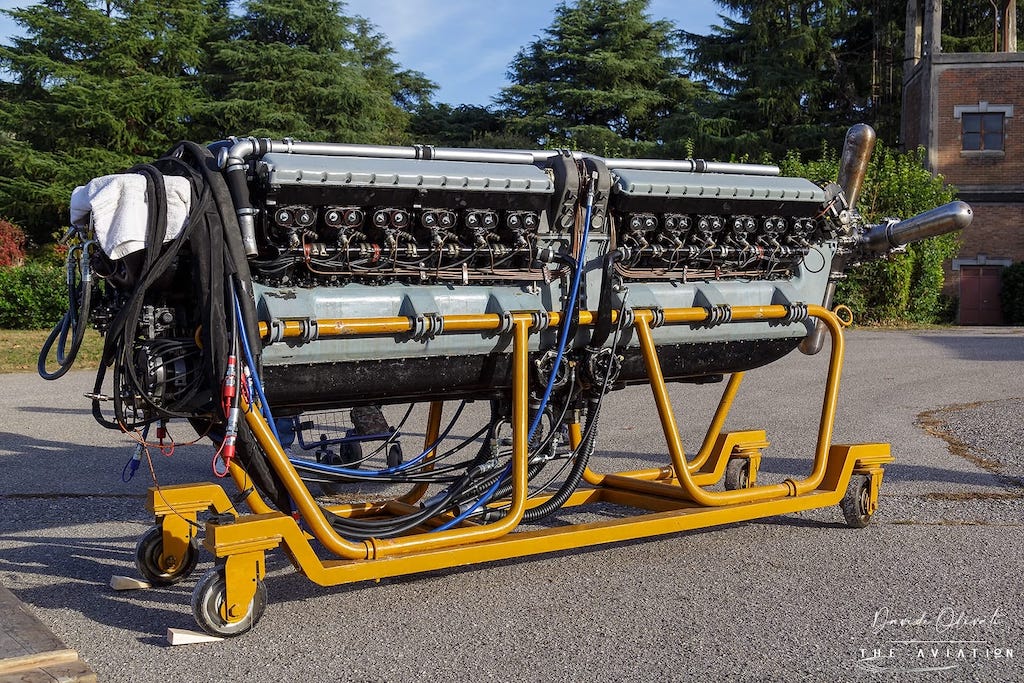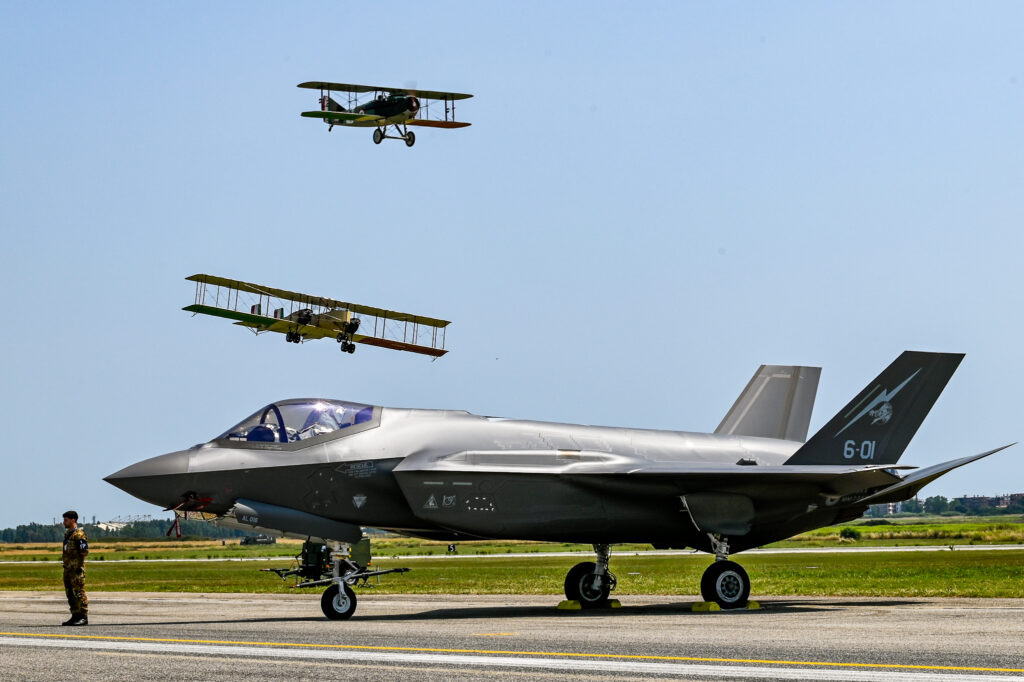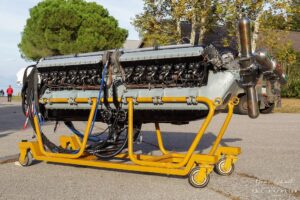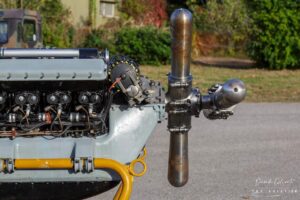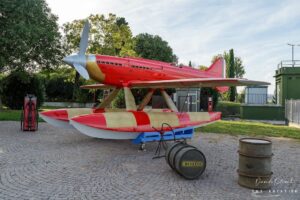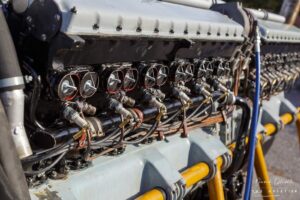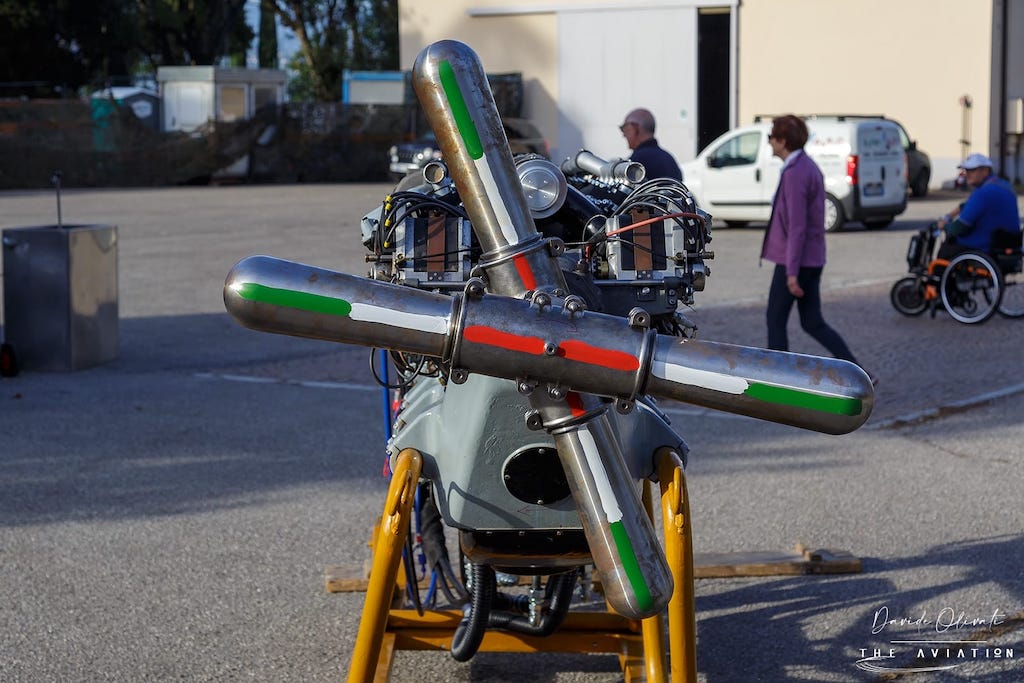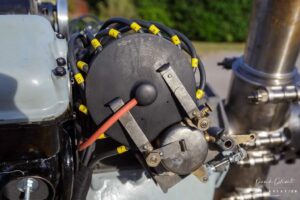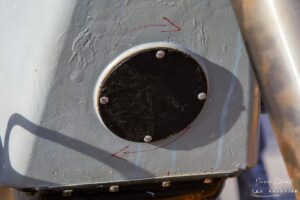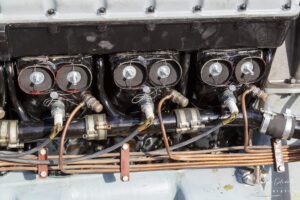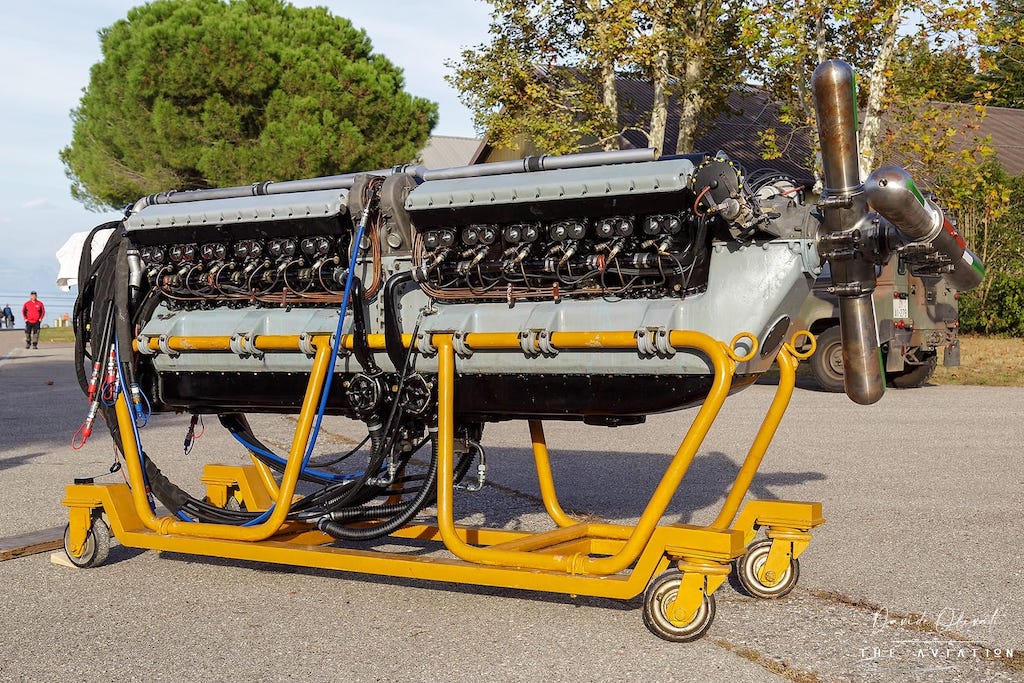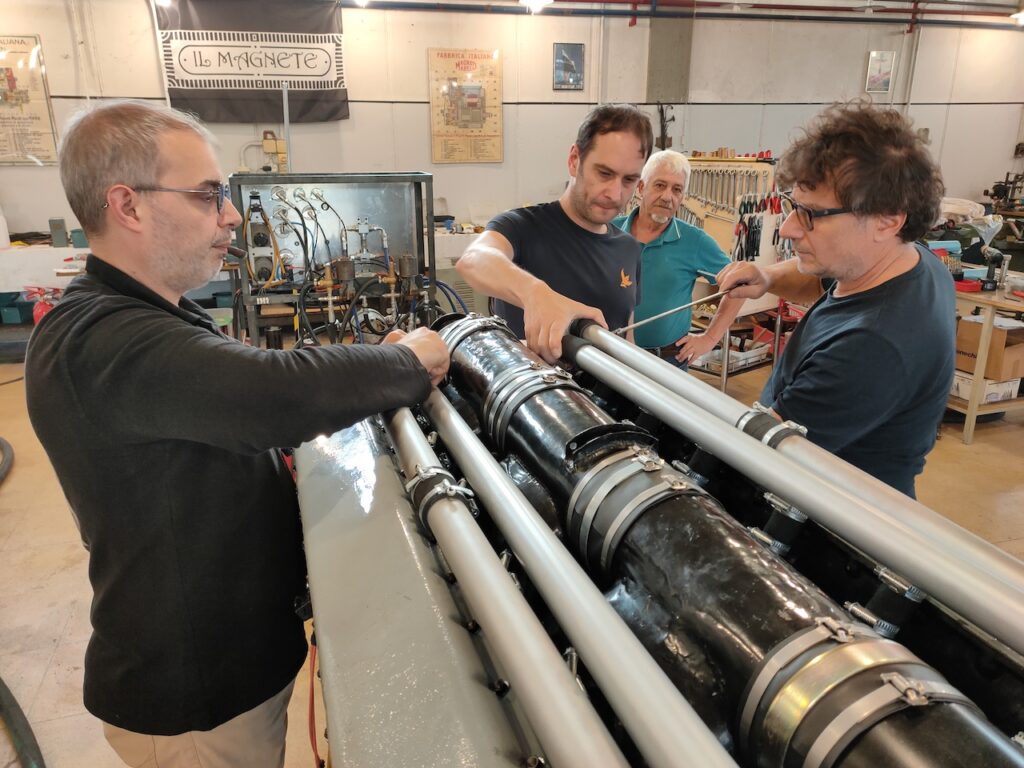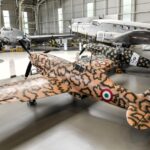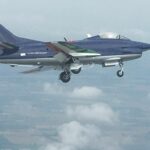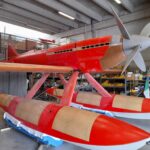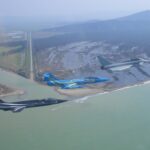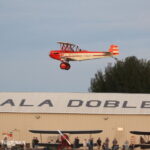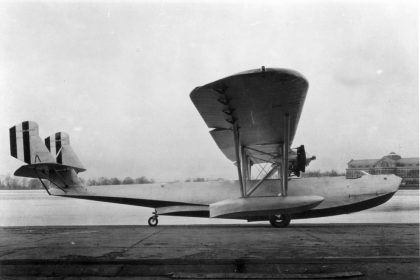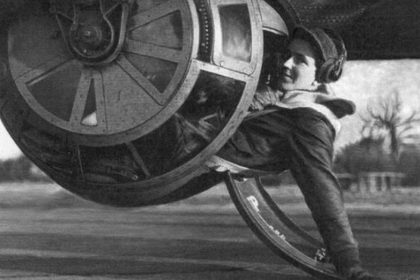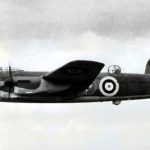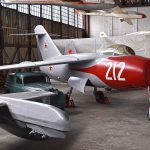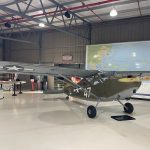2023 marked the centenary of the Aeronautica Militare Italiana (AMI), Italy’s Air Force. However, despite its rich aeronautical heritage, Italy is not well known for its vintage aviation activities. This year was different though, and definitely, one to remember for the Italian historic aviation community thanks to the AMI and numerous private organizations and historic aviation enthusiasts who organized special initiatives to celebrate this significant milestone.
Early in the year, we announced the compilation of a full-scale, static replica of the magnificent Macchi-Castoldi M.C.72 seaplane racer, which took shape on the shores of Lake Garda in Desenzano del Garda. In early June, we reported on the first flight of a replica WWI-era Caproni Ca.3 bomber which took flight thanks to the efforts of The Jonathan Collection and Giancarlo Zanardo. Following this came the first flight of a FIAT G.91 Cold War-era jet which Vola Fenice and Renzo Catellani made happen. Then, in early June, the Museo dell’Aeronautica Militare (Italian Air Force Museum) reopened after a major renovation, followed by the official centennial air show at Pratica di Mare air base which saw a Lockheed F-104 Starfighter flying in Italian skies for the first time in nearly twenty years due to the efforts of Florida-based Starfighter Aerospace. Meanwhile, at the Volandia Museum in late September, the Savoia Marchetti Historical Group unveiled a full-size reproduction of the Savoia-Marchetti S.55X seaplane of the same type which Italo Balbo made famous in 1933 with the famous cruise involving 24 of these massive machines flying across the Atlantic from Italy to Chicago for their role in the Century of Progress International Exposition.
But on Sunday, October 22nd, 2023 another major event took place to commemorate Italy’s proud aviation heritage – this being the resurrection of an ultra-rare Fiat AS.6 engine. This massive, V-24 engine powered the legendary Macchi Castoldi M.C.72 seaplane on its world absolute speed record flight (440.681 mph) of October 23, 1934, with Warrant Officer Francesco Agello at the controls. The rebuilt engine roared to life in front of a crowd (almost exactly 89 years after that momentous day) following a two-year restoration effort. At the end of this article, you can see the video of the engine’s first successful test run, which took place a few days before the main event.
“The awakening of the myth,” a phrase coined for this day of celebration, seemed wholly appropriate, given that the location chosen for the event was at the Idroscalo di Desenzano, the very same seaplane base where the Macchi-Castoldi M.C.72 flew with the Reparto Alta Velocita (High Speed Department) during their record-setting trials in the 1930s.
The Fiat AS.6 24-cylinder, liquid-cooled engine resulted from a Ministry of the Air Force commission to build a competitive powerplant for the Schneider Trophy seaplane races in 1931. Tranquillo Zerbi designed this magnificent beast of an engine on behalf of the Italian manufacturer, Fiat Aviazione. In addition to the speed records which the AS6 enabled, the engine is also the most powerful gasoline fueled sports engine ever made in Italy.
Aviation historian, Gregory Alegi, explains how this engine survived to the present day: “The importance attributed to the Schneider Cup in Italy led to the early conservation of its planes and memorabilia. Regarding the Fiat AS.6 engines – of the 12 units ordered, at least two were lost with the aircraft on which they were installed (certainly the MM*.178 and perhaps the MM.180). “ *MM = Matricola Militare – Military Serial Number.
Alegi continues: “Three examples survive today. One, whose internal conditions are unknown, is installed on the Macchi C.72 MM.181 preserved at the Historical Museum of the Air Force (MUSAM). The aircraft is one of the three set aside in Desenzano in 1935 (MM.177, 179 and 181), of which only the MM.181 of the record-breaking flight appears to have survived the war. The second complete engine, also at MUSAM, is the one that was started the weekend of October 22nd. During the restoration, it was discovered that this engine was an assembly of parts from engines #7-8-9-10 and #11, with two AS.5 cylinders coming from an AS5 engine, which were not even connected to the cooling system. It is therefore clearly an example used for display, set up at an unspecified time, probably by Fiat itself, judging by the quality of the insertion of the AS5 pieces. This engine has been on display at the MUSAM since its inauguration in 1977.
The third engine still existing is preserved at the Fiat Historic Center, and is also an assembly of several engines, but much less complete than the others. Its history is unknown, also due to the absence of any serial number in the visible parts.”
If the AS.6 was able to roar again after more than 80 years of silence, it is only because of the efforts of the “Il Magnete” Association, led by its founder, Leonardo Sordi. Roughly 5,500 hours of work was involved in the various tasks needed to complete the project, including dismantling, historical research, reconstruction of components and accessories, reassembly and testing.
Sordi, a true ‘Renaissance Man,’ has more than three decades of experience working with antique engines and historical motorsport engines. He is known for custom-built ignition magnetos (including aeronautical ones) and spark plugs, which equip some of the rarest antique and classic cars around the world. Through his reconstruction of important engines and their accessories, Sordi has been collaborating with museums for many years. Some of these collaborations have included the functional restoration of a 1908 Wright engine and an SPA 6A (Italian WWI-era water-cooled inline six-cylinder aero engine), not to mention several other automobiles.
The next engine Leonardo Sordi will bring back to life is an incredibly rare Isotta Fraschini Asso 750 of the same type that powered Italo Balbo’s S.55 seaplanes used for the ocean crossing voyage of 1933.
From an aeronautical preservation perspective, Italian aviation enthusiasts will remember the year 2023 as one of the most active and prolific in decades and, hopefully, an incentive for future projects to come!
We would like to thank Andrea Rossetto, Giuseppe Barbetta, Leonardo Sordi, Davide Olivati and Gregory Alegi for providing us with historical data, photos, and videos of this important occasion.







